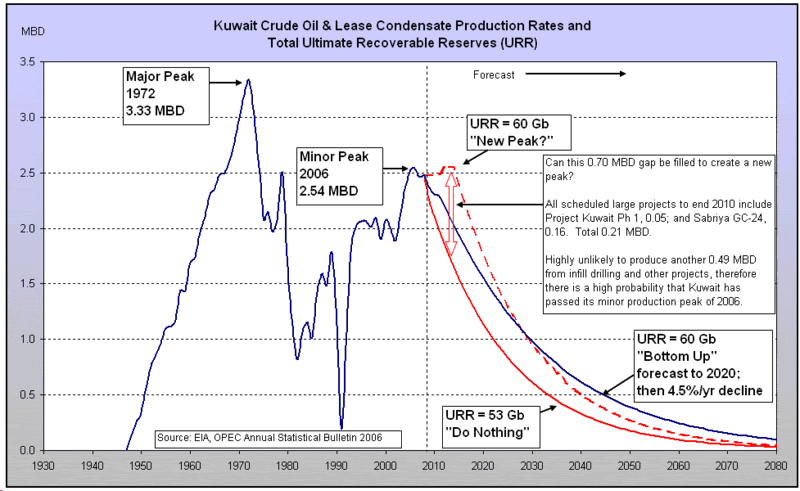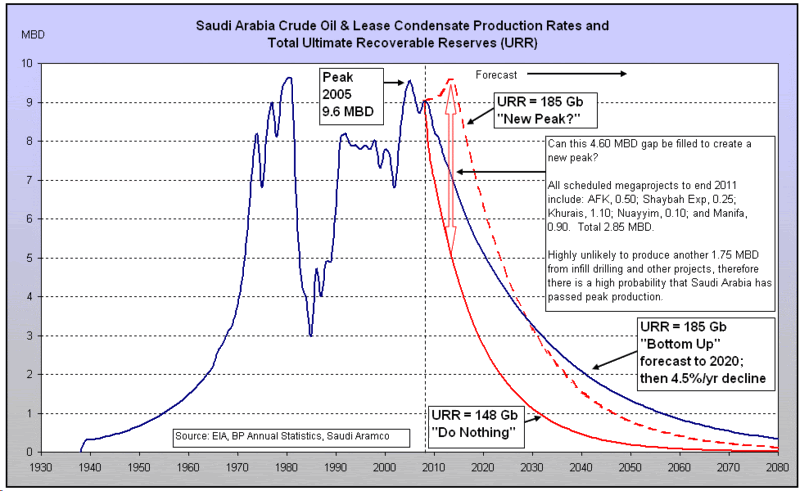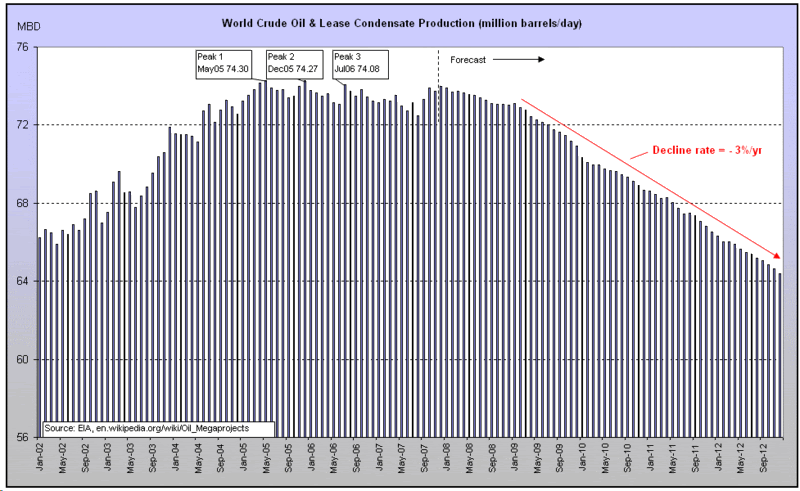In the early 2000s, geologists who independently examined Cantarell said that this would happen, and they were exactly right and on schedule. The idea was: "There is only a 300-foot layer of oil left, and you are pumping it out at 100 feet per year." Pemex said there was no problem. Result: Economic disaster for Mexico and much less oil to export (possibly going to zero net export in just a few years, and Mexico used to supply the US with 10% of its oil, so not good for the US either), and a classic example of energy drilling financing. The geologists give a range of production estimates, say 5 billion barrels to 20 billion barrels, each with low probability, with the most likely 10 billion barrels; whoever owns the field rushes to the banks and tells them the most optimistic estimate, because that means they can get bigger loans at lower interest because they "have more collateral". I-like-it-so-it-is-true again fails to alter reality.
(We may see this repeated with natural gas drilling. Too many wells drilled too fast, causing a drop in natural gas prices, followed by a crash due to financing drying up and depletion. A flying monkey wrench that could cause the natural gas drilling boom to crash even sooner is if the fracking (hydraulic fracturing) method causes intolerable levels of groundwater contamination. http://www.npr.org/ombudsman/2009/10..._series_1.html )
So what won't you see on this list? Mexico's Cantarell is nowhere to be seen. It used to be the second-biggest producer in the world, giving more than 2 million bpd; it's now in terminal decline, slipping below 400,000 bpd.
Likewise Russia's Samotlor. It was the monster field of the Soviet Union, with production peaking at 3.5 million bpd in the 1970s. Today it's doing more like 350,000 bpd.
No respect for China's biggest field Daging either; it still produces roughly 800,000 bpd but is in serious decline.
http://www.forbes.com/2010/01/21/big...hannelsections
(We may see this repeated with natural gas drilling. Too many wells drilled too fast, causing a drop in natural gas prices, followed by a crash due to financing drying up and depletion. A flying monkey wrench that could cause the natural gas drilling boom to crash even sooner is if the fracking (hydraulic fracturing) method causes intolerable levels of groundwater contamination. http://www.npr.org/ombudsman/2009/10..._series_1.html )
So what won't you see on this list? Mexico's Cantarell is nowhere to be seen. It used to be the second-biggest producer in the world, giving more than 2 million bpd; it's now in terminal decline, slipping below 400,000 bpd.
Likewise Russia's Samotlor. It was the monster field of the Soviet Union, with production peaking at 3.5 million bpd in the 1970s. Today it's doing more like 350,000 bpd.
No respect for China's biggest field Daging either; it still produces roughly 800,000 bpd but is in serious decline.
http://www.forbes.com/2010/01/21/big...hannelsections







Comment